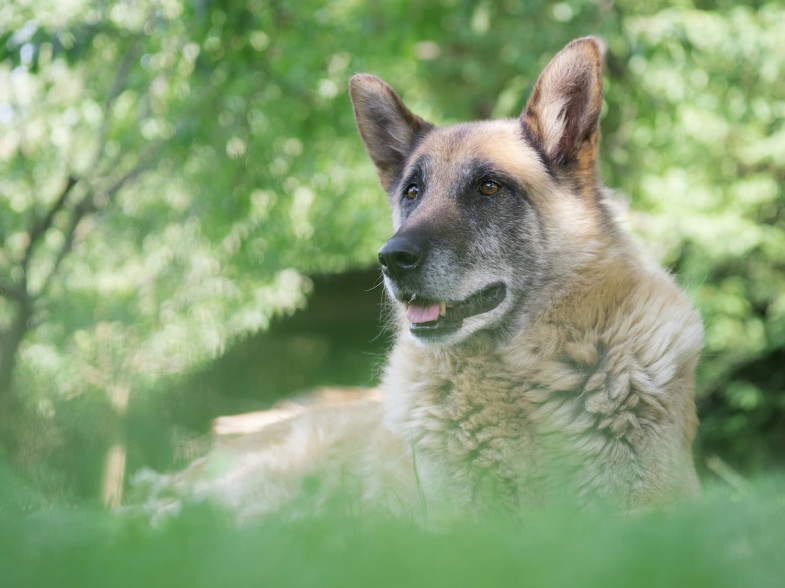Turner Veterinary Clinic News
Hidden Signs of Pain: How to Recognize Discomfort in Your Pet

When our pets are sick or injured, they can’t tell us where it hurts or how they feel. However, there are subtle signs that can help you determine when your pet isn’t feeling well. Knowing how to recognize these hidden signs of pain is essential for getting your pet the help they need and improving their comfort.
In this article, we’ll discuss some of the hidden signs of pain in pets and what you can do to help.
Common Signs of Pain in Your Pet
While recognizing pain in your pet can be challenging, there are some things you should be looking for. Below are the most common signs of hidden pain in your pet.
- Decreased activity
Is your pet moving slowly or reluctant to engage in normal activities? Decreased activity is one of the most common signs of pain and discomfort. If your pet isn’t feeling well, they may be less interested in their normal activities, such as playing or going for walks. You may also notice your pet becoming more reluctant to perform simple tasks such as going up or down the stairs or jumping up on the couch.
- Decreased appetite
Meal time is usually a favorite time of day for our furry friends. However, if your pet suddenly stops finishing their meals or seems less interested in food, it could indicate an underlying problem. Pets with gastrointestinal upset may lose their appetite and have difficulty keeping their food down. Additionally, dental disease can make it uncomfortable for your pet to eat and enjoy their food.
- Change in behavior
When your pet is in pain, their behavior can change drastically. Pets who are affectionate and friendly may get aggressive or defensive. While this can be alarming, it’s natural for your pet to try to protect themselves when they’re not feeling well. In some cases, pets may also become withdrawn. You may notice your pet hiding or spending more time alone.
- Excessive Grooming
When your pet is experiencing pain or discomfort, their grooming habits can change. Excessive licking or grooming of a particular area can be a sign of an underlying problem. Additionally, continuous licking can cause a hot spot and additional trauma.
If you notice your pet licking, examine the area closely and look for any signs of injury. You’ll also want to discourage your pet from continuing to groom the area to prevent further harm.
What You Can Do to Help
Recognizing the early signs of pain is essential for getting your pet the help they need. If you notice any indication of pain, please give us a call so we can help. Our team will perform a thorough evaluation of your pet and discuss your concerns. Your observations can provide critical information to help us diagnose your pet. Once we know what’s wrong, we can discuss treatment options and pain management to help get your furry friend back on track.
Final Thoughts
When it comes to showing pain, all pets are different. It’s important to monitor your pet closely and know how to spot subtle signs of discomfort. If you have additional questions or concerns about your pet’s health, please give us a call. We hope these tips will help you identify your pet’s pain sooner and get them the essential care they need.
Categories
Recent Posts

The holidays are full of sparkle, laughter, travel, and to-do lists a mile long. As joyful as this season can be, it often means busier schedules and less time for everyday routines. In the middle of the holiday rush, it's easy to overlook one very important family member: your pet.

If you're lucky enough to have a senior pet, you know just how special that bond becomes over time. From cozy afternoons on the couch to the look in their eyes that says, "I've known you forever," there’s a deep and quiet understanding between you. As pets get older, though, their needs change. Aging isn’t a disease, but it does require us to adapt how we care for our beloved companions.
The good news? With the right care and attention, senior pets can enjoy happy, healthy golden years. Here are seven simple but meaningful health tips to help your older dog or cat feel their best.

Has your dog seemed a little more reserved lately, or is your cat less interested in playing with their favorite toys? It can be easy to attribute these changes to aging or mood, but pets are experts at hiding discomfort. The good news is that there are plenty of subtle signals that can provide clues that your pet may be experiencing pain, and many treatment options to help alleviate this discomfort.

Did you know that pets accidentally start nearly 1,000 house fires every year in the United States? It’s a scary thought, but it doesn’t have to be a reality in your home. Our furry companions are naturally curious and love to explore their surroundings, but sometimes their adventures can put them, and your entire household, at risk. The good news? With a little awareness and a few easy changes, you can protect your pets and keep your home safe from fire hazards

If your dog won’t stop licking, chewing, or scratching one spot, it’s natural to wonder: “Is something wrong with my pet?” While occasional itching can be common, constant attention to a single area can signal a more serious issue, such as a hot spot. These inflamed patches of skin can appear almost overnight and quickly become painful and infected without treatment.
Let’s explore what hot spots are, what causes them, and how to help your dog heal quickly.